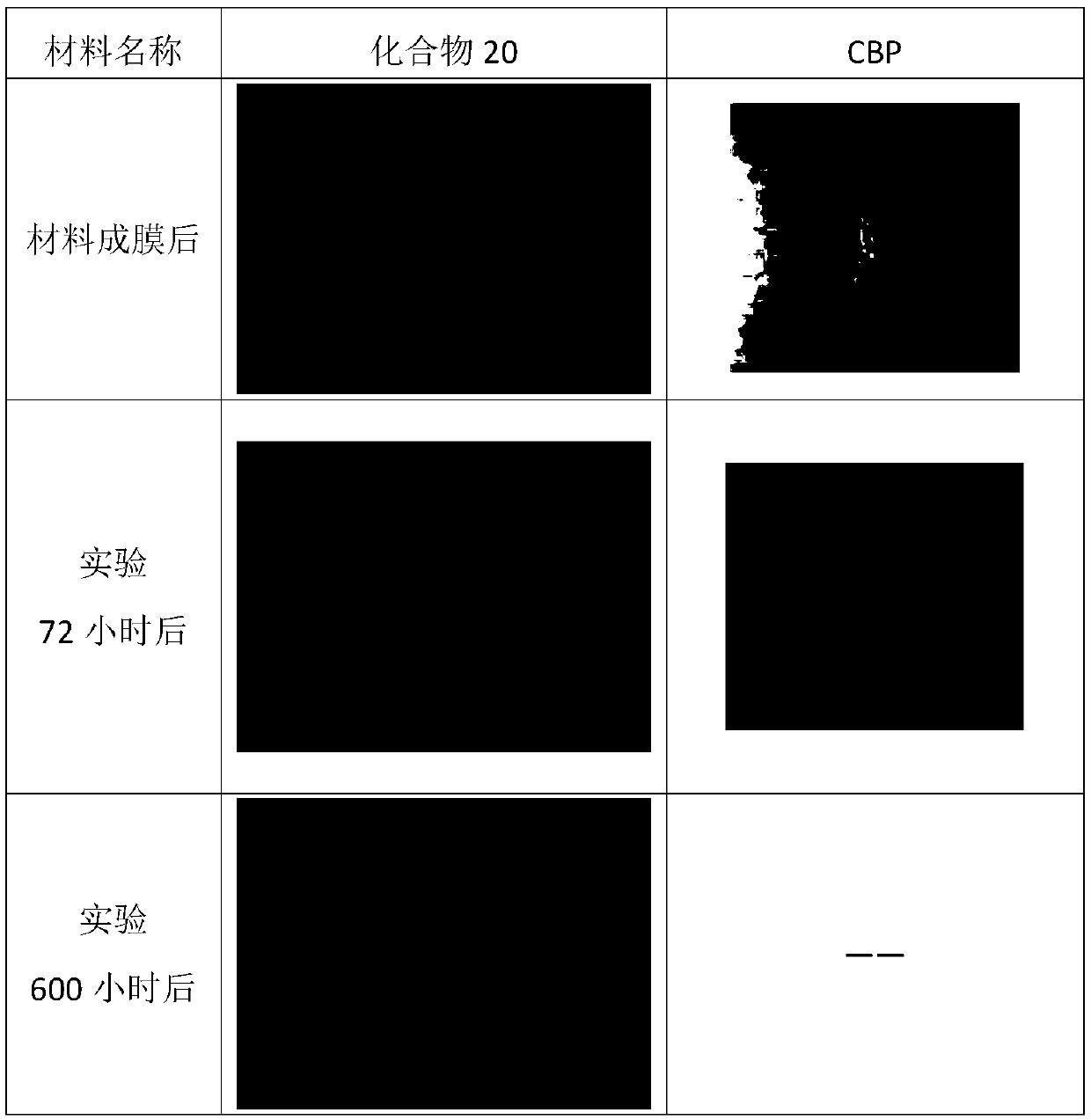Organic compound based on triazine and benzimidazolone structures and application of organic compound in organic electroluminescent device
A technology of organic compounds and benzimidazoles, applied to organic electroluminescent devices, in the field of organic compounds based on triazine and benzimidazolone structures, can solve the problem of affecting the OLED radiation spectrum angle distribution and complex fabrication process And other issues
- Summary
- Abstract
- Description
- Claims
- Application Information
AI Technical Summary
Problems solved by technology
Method used
Image
Examples
Embodiment 1
[0144] Synthesis of Intermediate A
[0145]
[0146] (1) Under a nitrogen atmosphere, weigh the raw material I and dissolve it in tetrahydrofuran (THF), then add bis(pinacolate) diboron, (1,1-bis(diphenylphosphino)ferrocene) dichloropalladium (II)(Pd(pddf) 2 Cl 2 ) and potassium acetate (KOAc) were added, the mixture was stirred, and the mixed solution of the above reactants was heated and refluxed at a reaction temperature of 70-90°C for 5-10 hours; after the reaction was completed, water was added to cool, the mixture was filtered, and the filter cake was Dry in an oven, dissolve the dried filter cake and pass through a silica gel column for separation and purification to obtain intermediate E; the molar ratio of the raw material I to bis(pinacolate) diboron is 1:1.0~3, Pd(dppf) 2 Cl 2 The molar ratio to raw material I is 0.001-0.04:1, the molar ratio of potassium acetate to raw material I is 1.0-4.0:1, and the ratio of raw material I to THF is 1g:10-30ml.
[0147] (2...
Embodiment 2
[0163] Embodiment 2: the synthesis of intermediate B
[0164]
[0165] Among them, L 1 and L 2 independently select hydrogen atom or -Ar 2 -Cl, x and y are natural numbers and x+y=a; X 1 Expressed as -O-, -S-, -N(R 11 )-.
[0166] (1) In a 250ml four-necked flask, under an atmosphere of nitrogen gas, add 0.01mol of raw material III, 0.02mol of raw material IV, 0.15mol of O-benzotriazole-tetramethyluronium hexafluorophosphate ( HBTU), 0.15mol of N,N-diisopropylethylamine (DIPEA), 80ml of DMF, stirring and reacting at room temperature for 5 hours, taking a sample and spotting the plate, showing that the reaction is complete; adding 80ml of ethyl acetate to the reaction mixture to dilute, Wash with 100ml of water and 100ml of brine in turn; separate the organic layer using a separatory funnel, MgSO 4 After drying and filtering, the filtrate was rotary evaporated under reduced pressure and passed through a neutral silica gel column to obtain intermediate F.
[0167] (2) ...
Embodiment 3
[0184] Embodiment 3: the synthesis of compound 9
[0185]
[0186] In a 250mL three-necked flask, blow nitrogen, add 0.01mol of intermediate A-1, 150ml of DMF, 0.015mol of intermediate B-5, 0.0002mol of palladium acetate, stir, and then add 10mL of 0.004mol / mL of K 3 PO 4 Aqueous solution, heated to 125 ° C, reflux reaction for 5 hours, sampling point plate, after the reaction, cooled and added 100ml of water, and the mixture was filtered and the obtained solid was dried in a vacuum oven; the obtained solid was washed with dichloromethane After dissolving, it was separated and purified through a silica gel column with dichloromethane:ethyl acetate=3:1 eluent to obtain intermediate D-9 with a HPLC purity of 99.1% and a yield of 76.2%.
[0187] In a 250mL three-necked flask, blow nitrogen, add 0.01mol intermediate D-9, 150ml DMF, 0.015mol intermediate B-1, 0.0002mol palladium acetate, stir, and then add 10mL 0.004mol / mL of K 3 PO 4 Aqueous solution, heated to 150 ° C, refl...
PUM
 Login to View More
Login to View More Abstract
Description
Claims
Application Information
 Login to View More
Login to View More - R&D
- Intellectual Property
- Life Sciences
- Materials
- Tech Scout
- Unparalleled Data Quality
- Higher Quality Content
- 60% Fewer Hallucinations
Browse by: Latest US Patents, China's latest patents, Technical Efficacy Thesaurus, Application Domain, Technology Topic, Popular Technical Reports.
© 2025 PatSnap. All rights reserved.Legal|Privacy policy|Modern Slavery Act Transparency Statement|Sitemap|About US| Contact US: help@patsnap.com



